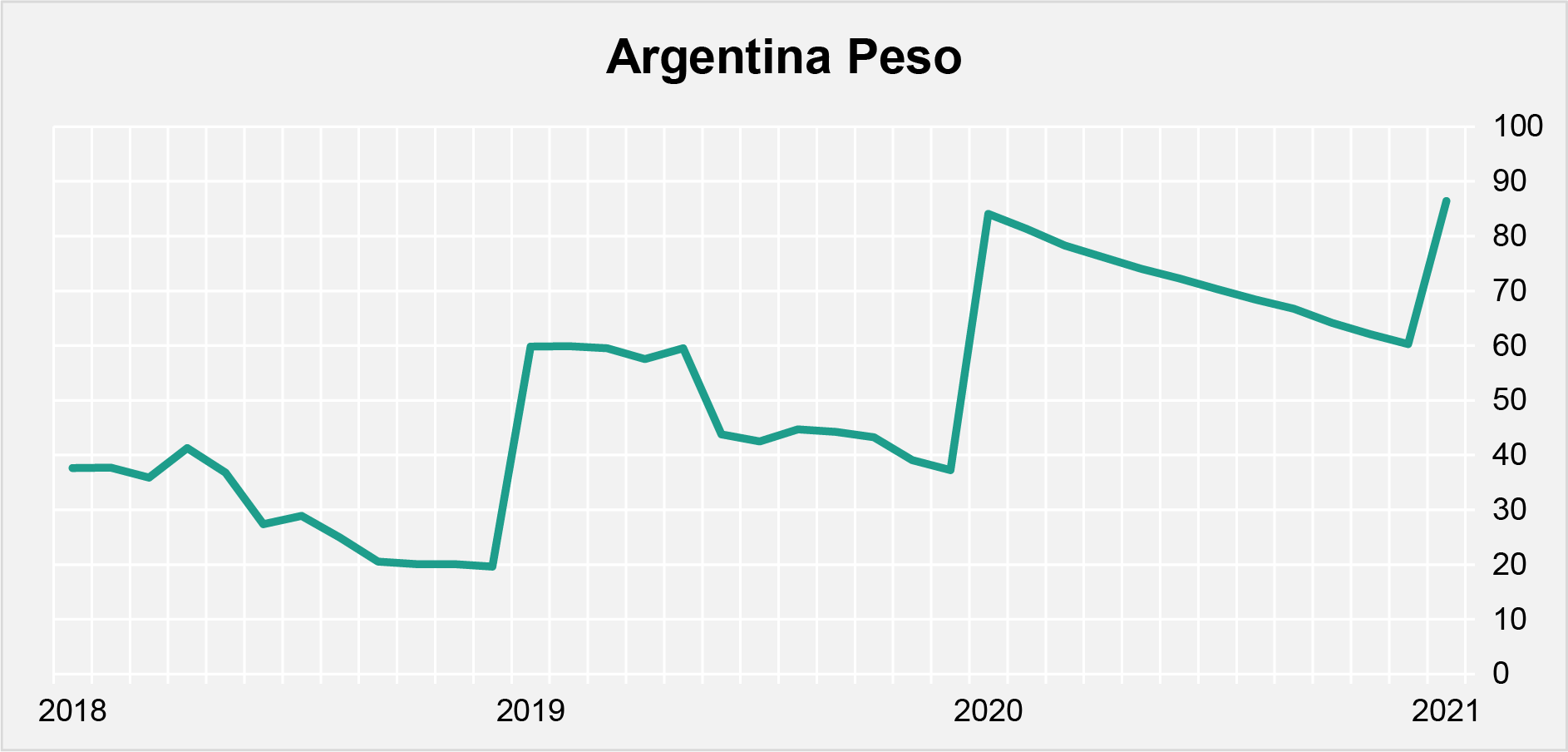Soybean Stalemate: What's Happening with Argentina's Crop
Prices are extremely good, so why aren’t farmers in Argentina selling their soybeans?
To understand the answer to this question means setting aside what you know about classic market signals. Right now, in Argentina, these signals may cause confusion.
Amid a long-term economic crisis in the country and government measures aimed at stabilizing the macroeconomic variables, farmers are holding on to their soybeans despite climbing prices at the Chicago Board of Trade (CBOT). With about 65% of last year’s crop sold as of December, Argentine farmers are on track to potentially have the largest carry-over in history.
As one of the world’s top exporters of soybean meal, what happens in Argentina impacts the global market. To better understand the situation, let’s look at the factors impacting farmers’ decisions.
Currency conundrum

Source: Reuters
Argentina’s local currency is the peso, but in recent decades the U.S. dollar has become the reference for making economic decisions and conducting transactions in multiple sectors, including agribusiness.
For the last two years, Argentina’s ongoing economic crisis has led the peso official exchange rate to devaluate by a cumulative +200%. Other alternative exchange rates, where government taxes are applied or through other market transactions that are subject to regulation by the local applicable authorities, have devaluated by a cumulative +300%.
The existing economic situation and the impact of COVID-19 has created pressure on the Argentina Central Bank reserves. To avoid further devaluation, the country implemented a series of measures to restrict local access to U.S. dollars.
Farmers are paid in pesos for their soybeans. So, for example, if a farmer were to sell his soybeans for $550 per ton, after taxes that would be roughly $340. Compared to the current peso alternative exchange rates existing in the country (subject to regulation by the local applicable authorities), the amount would be equal to about $200 per ton. That amount is well below the minimum price of soybeans for the last 13 years.
So even as CBOT grain prices rallied, farmers have generally been selling only the bare minimum to cover expenses.
Eyes on the sky
To add to the difficult situation, Argentina faced unfavorable weather conditions during planting, calling this year’s yields into question. It’s a La Niña year, an occasional weather pattern that may result in less rain than usual.
Nowhere in the world can farmers store their crops forever. Eventually, room should be made for the new harvest, which starts in April. Withholding the soybeans tightens supply and puts upward pressure on prices, but at some point, that crop will become available and there could be a softening of demand.
Ultimately, it’s a combination of the weather and the evolving economic context that will impact farmers’ decisions. For those watching global grain markets, now is a good time to contact a Cargill representative to help with your price risk management.
These materials have been prepared by personnel in the Sales and Trading Departments of Cargill Risk Management, a business unit of Cargill, Incorporated based on publicly available sources, and is not the product of any Research Department. These materials are not research reports and are not intended as such. These materials are for the general information of our customers and are a “solicitation” only as that term is used within CFTC Rules 1.71 and 23.605, as promulgated under the U.S. Commodity Exchange Act. These materials are provided for informational purposes only and are not otherwise intended as an offer to sell, or the solicitation of an offer to purchase, any swap, security or other financial instrument. These materials contain preliminary information that is subject to change and that is not intended to be complete or to constitute all of the information necessary to evaluate the consequences of entering into a swap transaction and/ or investing in any securities or other financial instruments described herein. These materials also include information obtained from sources believed to be reliable, but Cargill Risk Management does not warrant their completeness or accuracy. In no event shall Cargill Risk Management be liable for any use by any party of, for any decision made or action taken by any party in reliance upon, or for any inaccuracies or errors in, or omissions from, the information contained in these materials and such information may not be relied upon by you in evaluating the merits of participating in any transaction. All projections, forecasts and estimates of returns and other “forward-looking” information not purely historical in nature are based on assumptions, which are unlikely to be consistent with, and may differ materially from, actual events or conditions. Such forward-looking information only illustrates hypothetical results under certain assumptions. Actual results will vary, and the variations may be material. Nothing herein should be construed as an investment recommendation or as legal, tax, investment or accounting advice. Cargill Risk Management is a provisionally registered Swap Dealer and operates under “Order of Limited Purpose Designations for Cargill, Incorporated and an Affiliate.”
